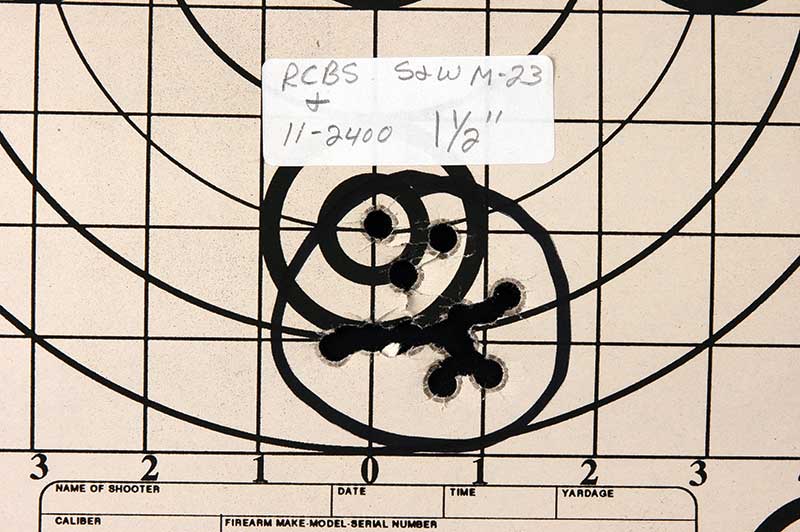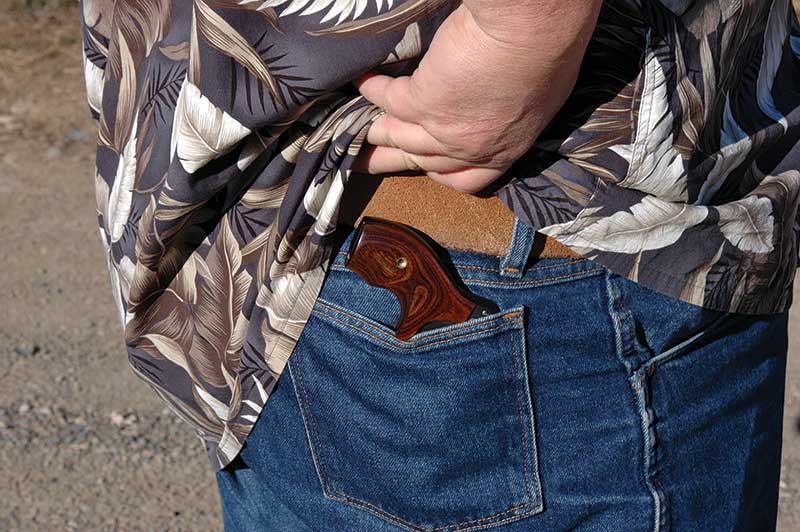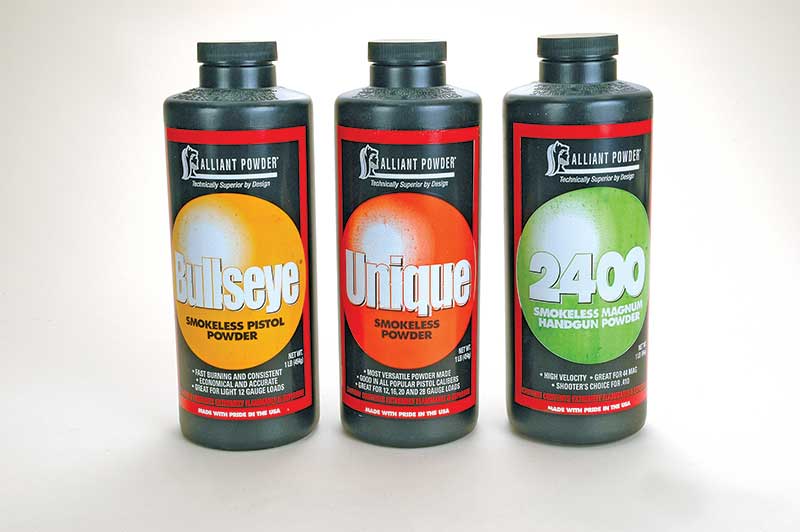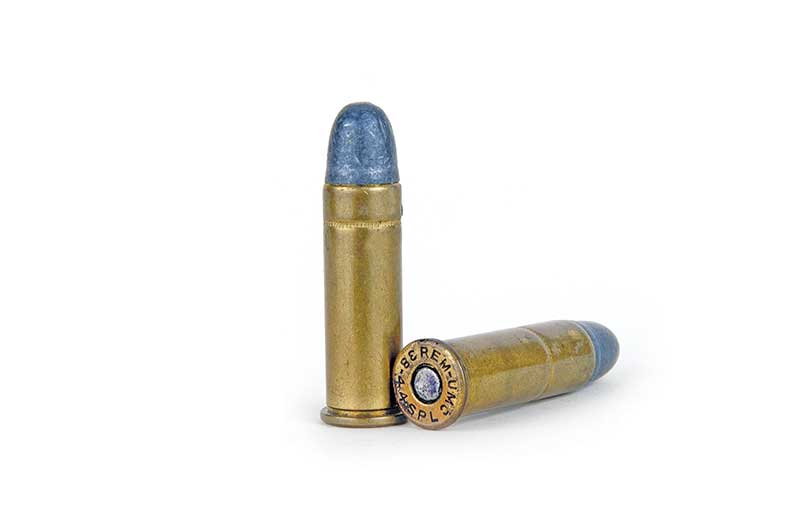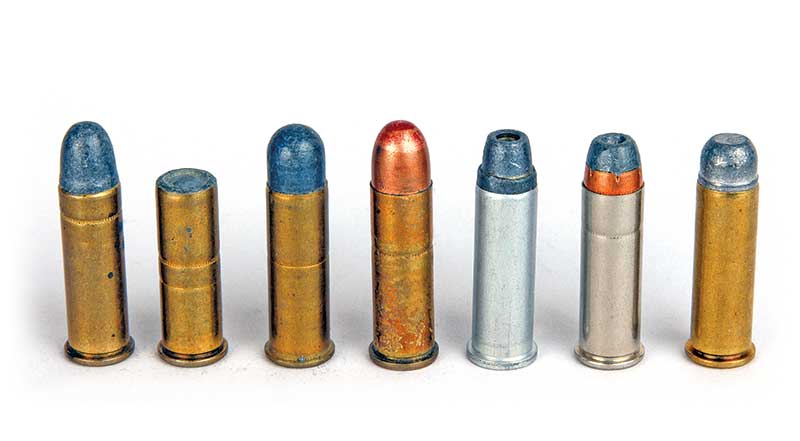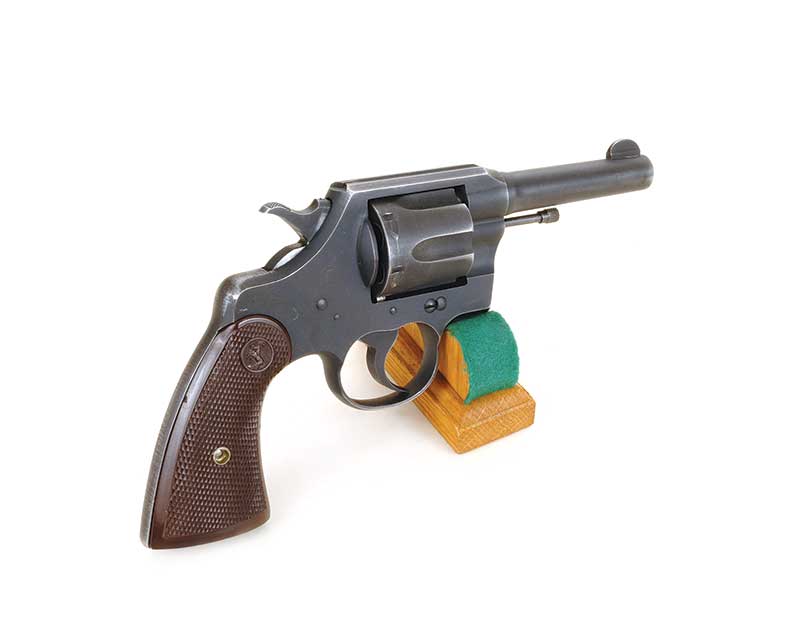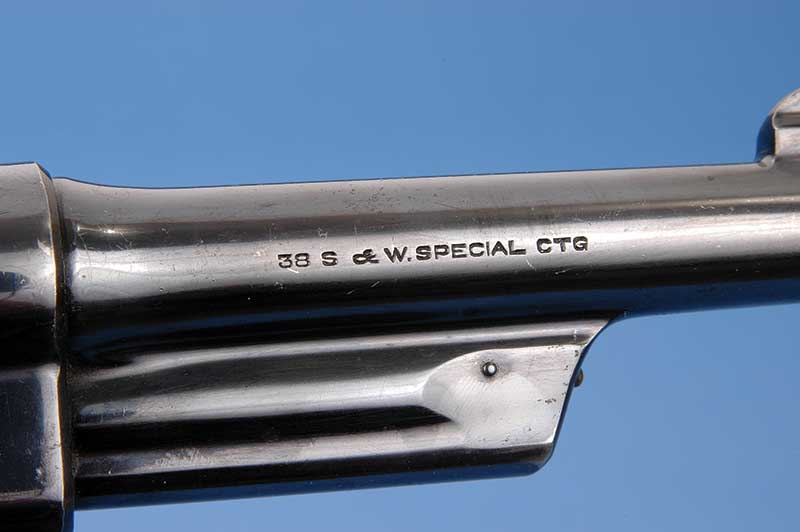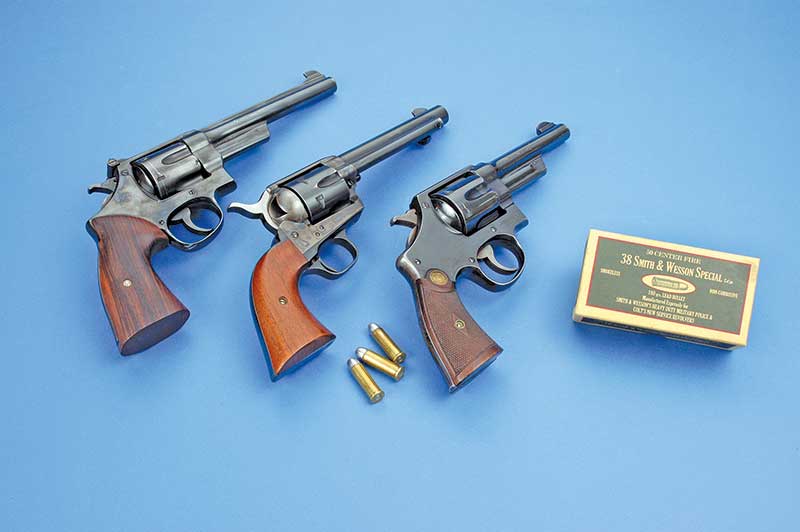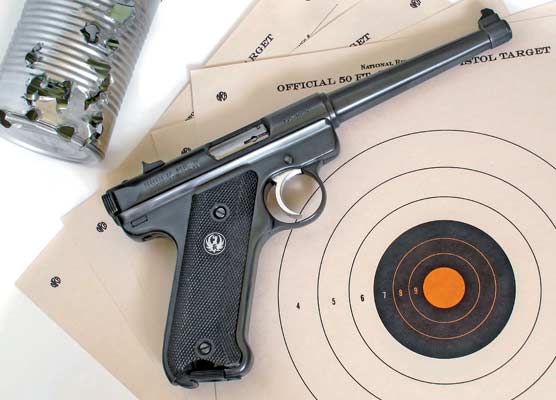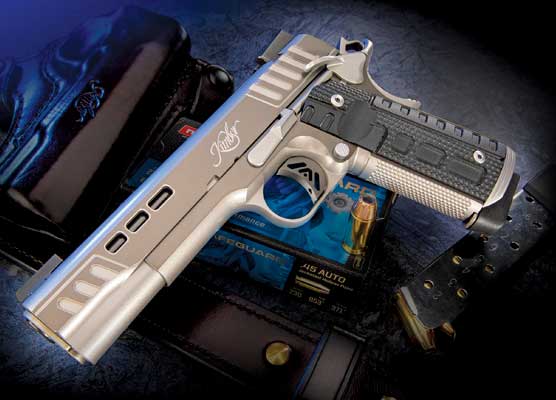A Special That IS Special
The Redoubtable .38 S&W Special
A while back I wrote a piece titled “The .44 Special Ain’t So Special”. Some might be surprised I received as many “atta-boys” for that piece as I did death threats! Now I want to tell you I think the .38 Special is indeed special. It does exhibit the inherent accuracy often mistakenly attributed to the .44 Special. It can be loaded hot in suitable handguns, and it can be loaded very light for paper target shooting. It’s equally adaptable to tiny snub nosed 5-shooters or large frame 6-shooters. It’s even been chambered in at least one auto pistol, the S&W Model 52. Factory ammo comes in so many styles, types and weights it’s impossible to keep track of them all. It’s also a handloader’s delight: easy to load and with a vast amount of suitable components available.
First off, let’s look at some dimensions. Of course, most of you know the .38 Special isn’t a .38 caliber. It’s actually a .35 caliber, with the bullet diameter being .357″. It was preceded by the .38 Long Colt which had a case length of 1.03″. Then the .38 Special came out with a 1.16″ case. It was succeeded by the .357 Magnum with a 1.29″ case. All .38 Special revolvers can safely fire .38 Long Colt cartridges. All .357 Magnum revolvers can safely fire both .38 Long Colt and .38 Special cartridges. Just so you know.
Just about anybody can be taught to shoot a .38 Special with enough proficiency to defend themselves. In fact when someone asks me what would be a good home defense handgun, yet they don’t show signs of becoming avid shooters, I tell them to get a mid-size frame, 4″-barreled, .38 Special revolver. There are plenty of them still being made today, and there have been millions made in the 110 years of
.38 Special history.
110 Years?
Does that 110 surprise you? The following information comes from U.S. Cartridges And Their Handguns 1795-1975 by Charles R. Suydam. The Union Metallic Cartridge Company made the first .38 Specials early in 1899 to go with S&W’s brand new First Model Hand Ejector revolver. Original loads held 18 grs. of black powder with 158 gr. roundnose bullets. In June of 1899 the powder charge was increased to 21.5 grains with the same bullets. Smokeless powder loads came about in September 1899. Suydam says initial smokeless powder loads were “probably” with 3.6 grains of Bullseye. And here’s another little tidbit from Suydam’s book. The official name is .38 Smith & Wesson Special, not just .38 Special.
Anyway, if the .38 Special has had an albatross hung around its neck in its history it was that 158 grain roundnose bullet. It was a notoriously poor manstopper. I’ve actually made solid hits on tiny ground squirrels at no more than 10 feet with that bullet and had them run off to their holes. Now swallow this: I’ve done the same thing with 255 grain roundnose .45 Colt bullets and likewise the ground squirrels ran off to their holes. That the ammunition factories stubbornly clung to roundnose revolver bullets for virtually all calibers decade after decade has to be one of the great mysteries of the gun world. By the time somebody shook them up enough to start loading semiwadcutter bullets and even hollowpoints, the .38 Special’s reputation was tarnished almost beyond salvation.
Sometimes It Worked
Here’s one time it did not fail, however. In the book The Lions Of Iwo Jima by Major General Fred Haynes (USMC-retired) and James A. Warren, Hayes relates a happening on the morning of March 3, 1945 on Iwo’s hill 362A. He and another officer were observing the terrain ahead when a Japanese soldier charged from a cave with a bayoneted rifle. The other officer’s runner, Wenton Yates drew his non-issue .38 revolver from a shoulder holster and dropped the attacker with one shot.
Although the .38 Special’s greatest reputation was as America’s predominant police cartridge for at least a half century, it did serve America’s military in an official capacity during World War II. Model 1911 .45 autos were in short supply so naval and marine aviators were often issued Smith & Wesson “Victory” model revolvers. Those were Parkerized K-frames with either 4″ or 5″ barrels. They were also issued .38 Special tracer rounds so they could signal search and rescue planes if they were in life rafts at sea. Also the US Government bought a number of Colt Commando .38 Special revolvers to arm homeland defense industry guards.
Beginner Loading
My handloading career — and I’d bet the handloading careers of many of you — started with the .38 Special. Mine began in December of 1966 and I cast my own bullets from the very first day. My .38 Special handloading was for an S&W K-38 target revolver, and I loaded and fired thousand upon thousand of cartridges for that handgun. As would be natural for any 17/18 year old I yearned instead for a .357 Magnum. When I got one in 1968 it only took a few shots with those ear splitting .357s to convince me shooting .38 Specials was more my game. That .357 was a 45/8″ Ruger Blackhawk. I’ve owned dozens more .357 Magnum revolvers is the 40 years since that first and likewise have fired far more specials in them than magnums.
Let’s back up to 1967 though. As a senior in high school the only friend I had with the slightest interest in firearms was named Mike Bucci. (Pronounced Butch). His father coincidentally was our town’s chief of police. So that his son could go shooting with me, he gave him one of his spare revolvers. When first showing me his .38 Special Butch felt a bit slighted because it had fixed sights compared to my K38’s target sights. When he handed me that massive revolver for the first time my jaw dropped. It was an S&W Heavy Duty .38-44 with 5″ barrel. I had seen photos of them but that was the first one I’d ever encountered. Butch perked up when I told him his .38 would handle far hotter loads than my .38 because it was built on S&W’s large N-frame and mine was on the medium-sized K-frame. In short order I handloaded him some .38-44 velocity rounds. At the range I set up a brick at about 20 yards and popped it with my standard .38 Special loads. It just fell over. Then I told Butch to whack it with one of his .38-44s. It shattered to pieces and Butch loved that old handgun from then on. Sadly, my friend Butch died of cancer at age 21.
More Fun
The .38-44 was the precursor of the .357 Magnum. Smith & Wesson brought it out in 1930 to give cops something more powerful with which to fight gangsters of that violent time. It was probably not the best ammunition idea to come down the pike. Factory loads had those same old roundnose 158 grain bullets but they moved at 1,150 fps compared to 850 fps for normal .38 Specials. No way those .38-44s should ever find their way into an ancient K-frame Hand Ejector, and heaven forbid that someone stick them in a tiny J-frame 5-shooter.
Speaking of those J-frame revolvers, I’ve owned a bunch of them, such as the Model 36 Chief’s Special and similar variations. They are great for sticking in a hip pocket. A few years back I acquired an aluminum frame, “hammerless” Model 442 that goes almost everywhere here in Montana.
A couple years ago some bright light at Smith & Wesson conceived the idea of making a small frame, 5-shot .357 Magnum, and to make it even more punishing they decided it had to be a scandium frame to boot. That made it weigh a mere 12 ounces. They named it the Model 360. I love mine. But if you actually consider it a .357 Magnum you’re nuts! It only took one .357 Magnum full bore factory load from it to convince me its really a .38 Special.
On the other end of the spectrum from those hot .38-44 loads are light .38 wadcutters. As factory ammunition they have 148 gr. bullets popping out at about 700 fps. Given a good handgun, they can be exquisitely accurate. I once did some extensive machine rest testing with Remington 148 gr. .38 Special wadcutter loads from my old 1940s vintage S&W Military & Police revolver with 5″ barrel. After a couple dozen 5-shot groups were fired at 25 yards, the average was not much over 1″.
A Weighty Choice
In between heavy .38-44s and light wadcutter loads there have been scores of various .38 Special factory loads. They have lead alloy or jacketed bullets and can be of normal pressures or +P types. There are even “cowboy” .38 Specials for that action shooting sport. Bullet weights have ranged from 95 to 200 grains, and that can present a problem for many .38 Special revolvers. Most of them, past and present have fixed sights; mostly that’s a groove down the frame’s topstrap and some sort of blade type front sight. And most of them are factory sighted for bullets weighing 150-160 grains. Fire 95 gr. bullets in them and point of impact is way low from point of aim. Fire 200 gr. bullets in them and they hit way high. How to cope with that? Simply stick with the bullet weights that hit on for your sights, which will likely be 150 to 160 gr. ones.
Early on in my love affair with the .38 Special I hit upon three handloads suiting all my purposes. The main one used for all recreational shooting is 3.0 grains of Bullseye under any lead alloy 150 to 160 gr. bullet. My opinion is that any with a flat nose are best. Next is the load I keep in a .38 Special if it’s kept around for defensive purposes. That’s 4.5 grains of Unique and ditto for the bullets. And lastly is the load I only use in large frame revolvers such as my S&W Model 23 Outdoorsman, which was built for the .38-44 loading described above, or in Colt SAA .38 Specials. That’s 11.0 grains of 2400 and again ditto for the bullets. In the same order and from 4″ to 5″ barrels and depending on exact bullet weight, those loads will give about 750 fps, 900 fps and 1,150 fps.
Turn your nose up at the old .38 Special if you want — I don’t. There are hotter, newer, flashier and much bigger handgun cartridges about. But, in terms of simple practicality none are more special.




